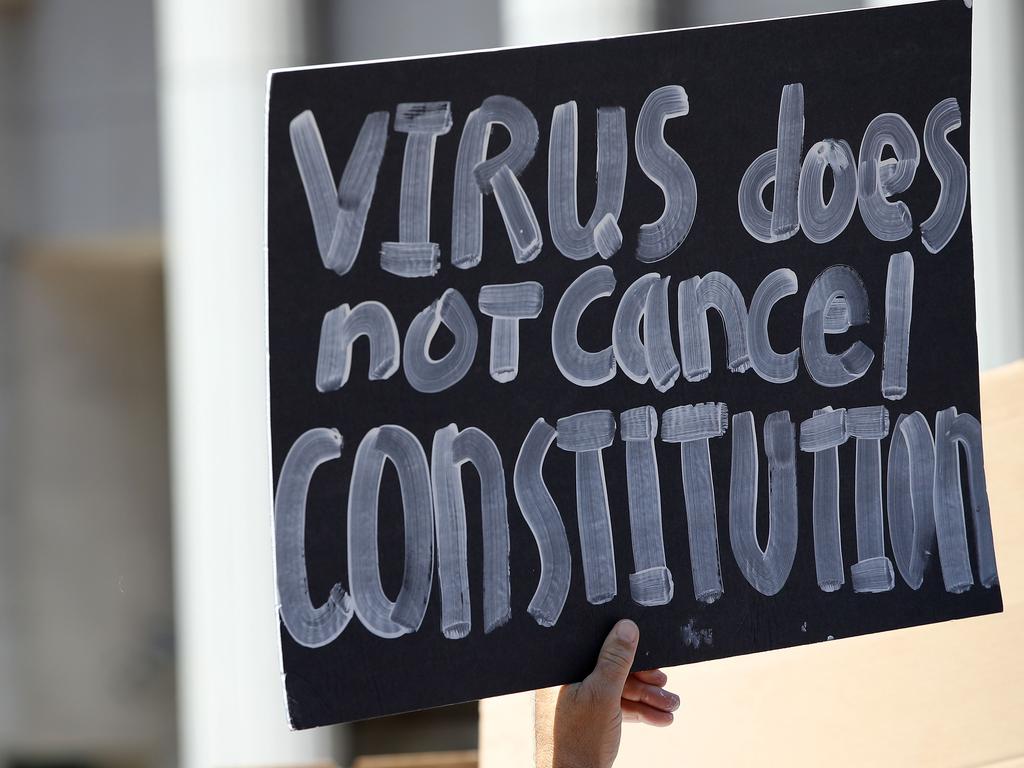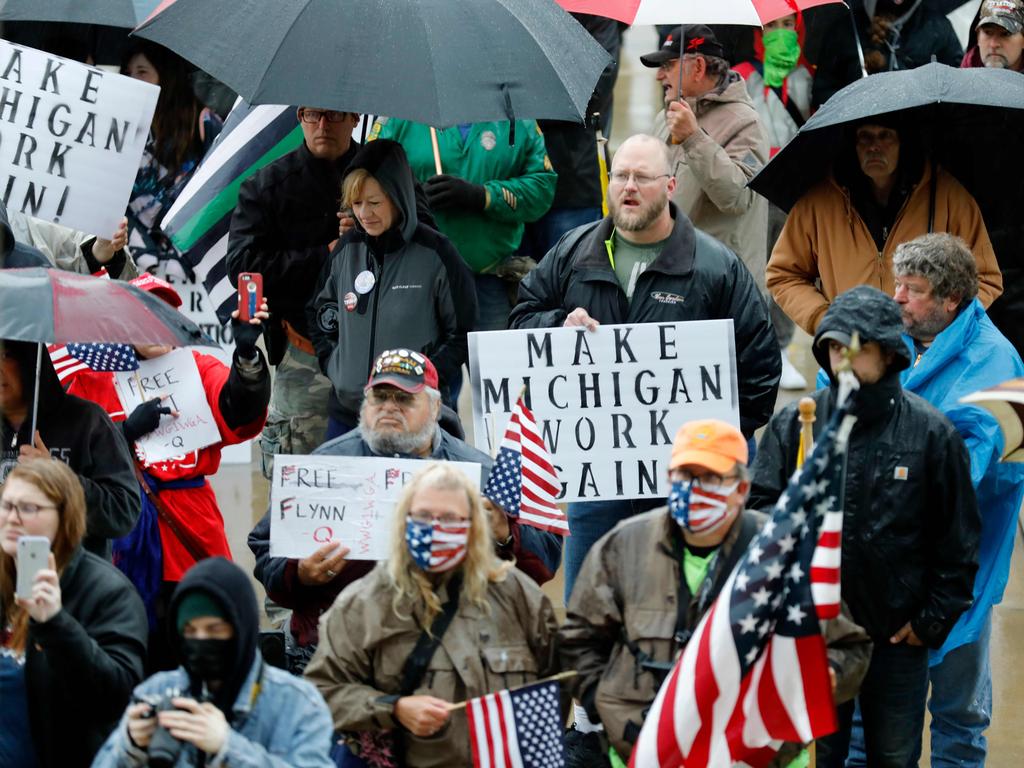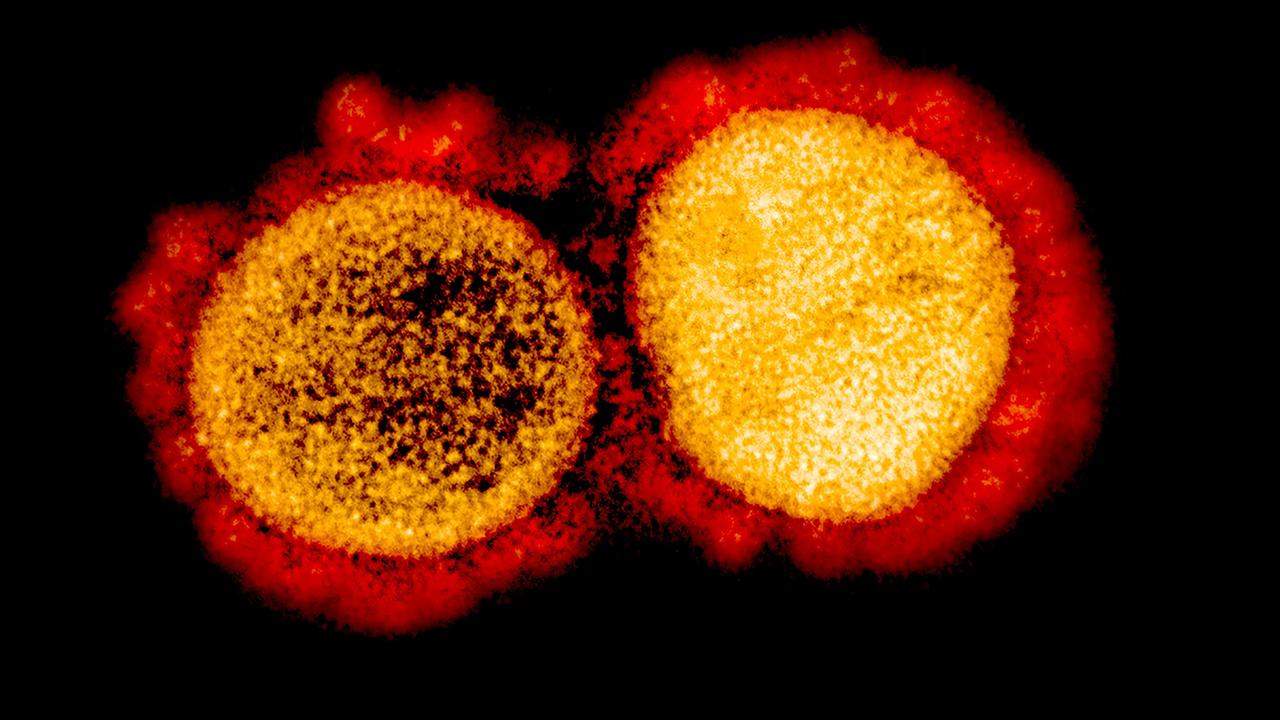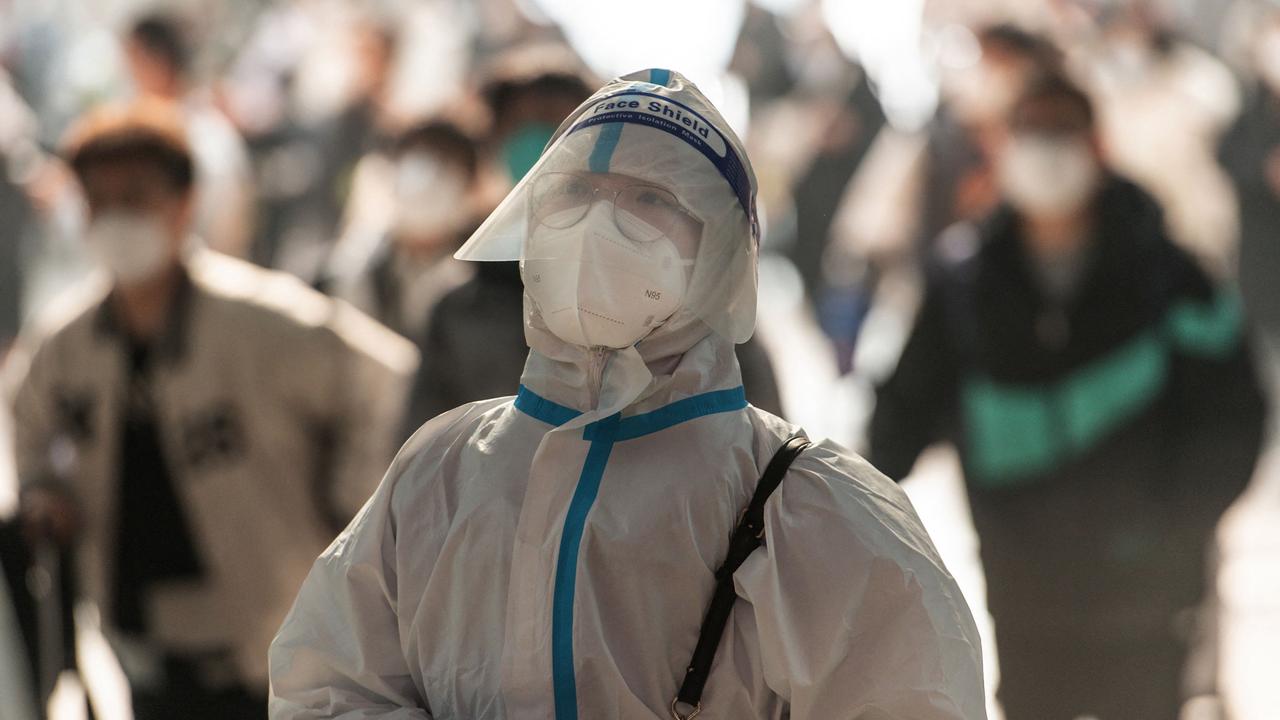Coronavirus US: Anti-lockdown protesters caught spreading virus
Phone data shows they travelled for hours to fight for their freedom – but when they returned home, they took COVID-19 with them.
US protesters who decried COVID-19 as fake and an attack on their liberties have been carrying the disease back to their remote communities.
And it was their use of the same mobile phones they accuse of being channels of contagion that gave them away.
Anonymous SIM-card location data reportedly shows thousands of demonstrators travelling hundreds of kilometres to make their point in regional capitals. They then return to their heartland communities – reinvigorated in their purpose, but also carrying the virus.
Such protesters are a small but vocal minority within the US. But anti-vaccination, anti-quarantine and anti-5G phone tower movements have begun to merge their efforts into larger gatherings. And this is spreading worldwide.
But their zeal comes at a price.
People can’t get enough of this. Great people! https://t.co/b4HM0C298h
— Donald J. Trump (@realDonaldTrump) May 16, 2020
In one instance, more than 70 people who attended an unauthorised 1500-strong rally at the Wisconsin State Capitol in late April later tested positive for COVID-19.
Another event in Lansing, Michigan, saw armed protesters break into the State Capitol – forcing police to intervene physically. Participants were tracked travelling up to 300km afterwards – despite movement restrictions.
“There was a company that put a geofence around the first protest, and it does appear to correlate with where we saw some COVID activity soar,” Governor Gretchen Whitmer told local media last week.
According to US ABC news, she later told US Vice President Mike Pence: “What we have seen from initial protests here is that we’ve got COVID-19 spreading in rural parts of our state, from which people travelled.”
RELATED: Man gives 52 people virus in 2.5 hours
RELATED: ‘Extreme’ conspiracy killing the faithful

DISEASED HEARTLAND
Medical tracking shows the pandemics rippling out from US cities and into the surrounding countryside.
In New York, the virus has spread through New Jersey and Connecticut, into Philadelphia and remote counties such as Hamilton, Essex, Lycoming and Wyoming.
“Most of these counties are small rural counties,” Brookings Institution demographer William Frey said. “Very, very few are what you would call inner city counties or inner suburb counties.”
And the extent of the threat can be seen in rural Arkansas. In one county, more than 30 of a small 92-strong church congregation contracted the disease. Three died.
Researchers from the University of Mississippi warn this spread of the pandemic into the US heartland is becoming a “silent disaster”.
“Chronic diseases that can lead to more severe COVID-19 symptoms are common across the rural South,” researchers Anne Cafer and Meagen Rosenthal wrote for The Conversation.
“The population is older and poorer than much of the country, and the health care system has been deteriorating for years as hospitals lose staff and close.”
Which is why more than 60 per cent of that state’s recent cases were in rural counties. And these are experiencing a much higher fatality rate than their urban cousins.
COLLATERAL DAMAGE
Despite attempts by many state governors to slow the virus (and in other cases, little attempt at all), the COVID-19 pandemic is following a well-established flu pattern.
“The first wave is in big cities, and it travels outwards from there. Isolated rural areas are hit later. This pattern is largely based on the connectivity of populations through human movement,” Penn State University’s Center for Infectious Disease Dynamics biologist Nita Bharti told The Hill.
And this is can largely be attributed to the failure – or breach – of COVID-19 ‘shelter in place’ orders.
Isolation could have protected them. Now mounting pressure to re-open state economies may further accelerate the spread of the virus.
“Rural areas may seem isolated from the coronavirus threat, but in the South, one in 12 rural residents commutes to an urban hub for work,” the Dr Cafer and Dr Rosenthal wrote.
Most are in low-paid healthcare and service industries. Most do not have access to sick leave and, as they are in insecure jobs, will likely continue to work even when sick.
“Despite the population’s vulnerability, Southern states have been a stronghold of resistance to federal and international recommendations around COVID-19 protective measures,” the report read. Which is why social distancing measures are being lifted even as the pandemic continues to balloon.
“This becomes a big problem right now when states are lifting regulations and behavioural interventions,” Dr Bharti said. “There are a lot of important heterogeneities within states and counties that determine the trajectory of epidemics, so statewide or even county-wide easing of restrictions will lead to problematic outbreaks in under-resourced rural areas.”
RELATED: Data leak exposes China’s virus cover-up
RELATED: Cities struck down as lockdowns lift

‘BATSH*T CRAZY’
The US is by no means the only nation to experience lockdown protests. Similar scenes – on a much smaller scale – have been seen around the world. About 100 took to the steps of Parliament in Melbourne. Hundreds gathered in Poland to protest border closures that kept them from their jobs. India saw clashes between police and trapped migrant workers. Chefs and waiters in Belgium covered a public square with their white jackets.
Economic concerns drive many.
Others insist on believing debunked conspiracy theories.
And such conspiracies continue to gain traction.
The anti-vaccine and evangelical movements, for example, are already attempting to whip up fears about a coronavirus vaccine. This is despite the fact one does not yet exist.
In the case of a COVID-19 vaccine, some 20 per cent of US citizens say they would hesitate to – or outright refuse – receiving the jab.
Other US protesters have vowed to hack contact tracing apps intended at identifying – and isolating – new COVID-19 cases. They say they will then track down individuals using the service. Their motive? To protest potential abuse of government-backed medical monitoring programs.
According to University of Western Australia lecturer Katie Attwell, such messages are finding fertile ground.
It’s an environment of fear, uncertainty and distrust.
“In this volatile cocktail the distinction between what is ‘batsh*t crazy’ and what is worryingly plausible starts to break down,” Dr Attwell wrote for The Conversation.
“Many of those who reject vaccines, or strenuously object to COVID-19 health measures, are influenced by interconnected social groups with clear identities. Standing atop a hill of self-ascribed expertise, they can gaze down on the ‘sheeple’ eating from the trough.”
Such groups form strong internal identities and reach out to other groups like themselves.
“That may be why Australia is now seeing ‘freedom’-focused anti-lockdown protests you wouldn’t generally expect outside America,” she said.
The answer? Dr Attwell said it might be best to “quietly ignore them”. Such social isolation will slow the spread of their viral propaganda.
“Remember, when we walk away from a child having a tantrum in a supermarket, we are also saving them from themselves – even if they can’t appreciate it.”
Jamie Seidel is a freelance writer | @JamieSeidel




